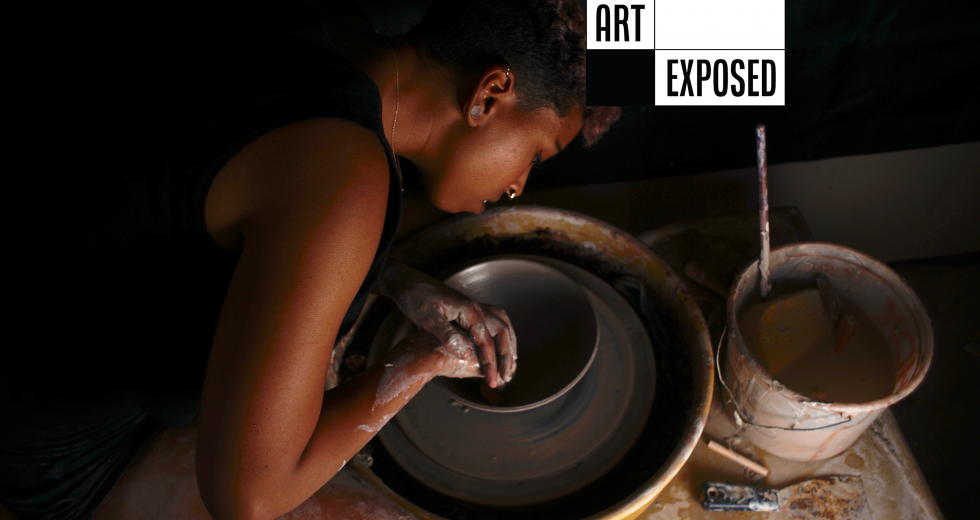Clay is one of the only mediums that will explode.
If clay is not dry enough when it goes into the kiln, or if there is an air bubble trapped in it, the water will turn to steam, leading the piece to expand and blow apart. One kiln explosion can raze hours of meticulous work into dust.
This risk is one of the many ways that ceramics is a practice in impermanence. Sacramento ceramicist Tasha Reneé can rattle off at least six ways that ceramics can go horribly wrong in a heartbeat, including a slip of the thumb on the wheel, kiln explosions, or bad chemistry in glazing. Even when a piece survives the chaos of creation, the finished piece will ultimately break. Every beloved mug takes a tumble sometime. The best someone can do is hold a little vigil and move on. But sometimes one might need to take a day off to grieve a particularly hard loss, the potter jokes.
“It teaches you not to get too attached to what it might be, because it might not. Even if it does make it through the creation process, one day it will break,” Tasha Reneé says.
Tasha Reneé, whose pronouns are they and she and whose artistic identity does not include a surname, was born and raised in Sacramento. After studying at San Francisco State, they lived in Los Angeles and later moved back to Sacramento, where a 2017 ceramics class at Sacramento City College offered an inroad to the art form. Tasha Reneé’s ceramics business launched in 2020, and by the following year shoppers could buy their handmade mugs, vases and planters through West Elm’s local artisan program and at local businesses such as Sac City Stems and Propagate Plants & Gatherings.
The physicality of the work — making batch orders of heavy items by hand — can be grueling. So Tasha Reneé has a new mission to scale back from wholesale orders and back into art for art’s sake. In fact, when asked about becoming a full-time potter again, the response was an emphatic no.
“Absolutely not. … It is too stressful, and there is so much pressure if you have to pay bills with art. Some people can do it, but you also have to be a social media manager so people even know that you are selling art.”
Currently, ceramic sales offer Tasha Reneé supplemental income. She is pivoting focus to teaching, taking on private invitation-only lessons with people in her community and running workshops and classes. An exhibit of her work will be on display at the National Council on Education for the Ceramic Arts’ annual conference, taking place in Sacramento in March.
How do you deal with being your own business manager on top of being an artist?
I did it all for a bit, then I hired my sister as an assistant. She was my “assister.” She would help clean the studio, wedge my clay and do those kinds of preparations. I was doing large orders and it made sense.
When you are on the wheel specifically, your body is a part of each piece. Throwing on the wheel can be quite a physical process, especially with larger pieces. It can take a toll on your body when you are throwing 5- or 6-pound planters and the clay is so stiff.
Physically, I already had off-and-on shoulder pain, but it became a solid year of terrible neck and shoulder pain. There are stretches to help your body out, and you have to learn how to position yourself so you are not working against the clay. I gave it a go: managing that pain while getting on a wheel and having deadlines. After last year I scaled back big-time from wholesale selling.
What does the business of art look like for you moving forward? What are your ideal circumstances?
Hella casual. I make something, I post it. If people want it, they buy it.
Before, selling pieces would make me feel validated that my work is good. But if I did a shop update and something didn’t sell I’d feel like my work is shit, especially if I’m trying something new. I’m trying to come to a place where I feel secure in myself and my art. I’m working on putting myself in the world without needing that validation, and that is super hard. I’d like to just post shit and go. I’d like to say, “This is for me, not you.”
When you are dealing with mass production, you are always thinking about your audience and what they like. It’s super restrictive. You are playing an algorithm to get likes and prove that you are good enough. Those algorithms though — even people who want to know when I have shop updates don’t see when I post. Am I going to have to start a newsletter? I just want to make stuff!
Tasha Reneé supplements income with ceramics, and is pivoting to
focus on teaching. (Photo by Leeah Painter)
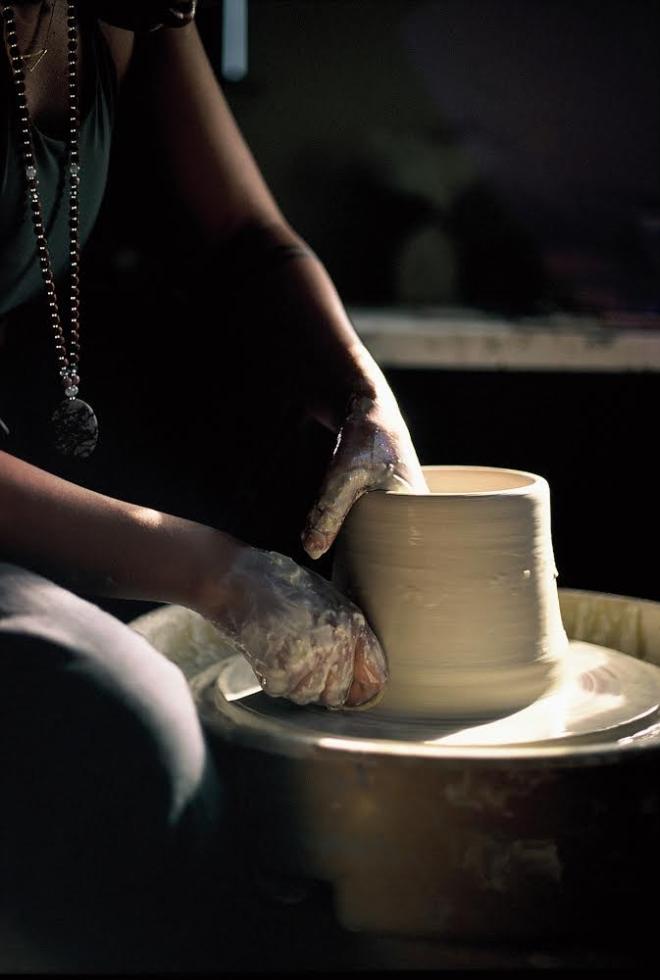
Having an active social media is important for a business, but not important for an artist. If you are looking for notoriety then it is important to have engagement. My work hasn’t actually changed much, but I have more followers now. A part of that is because I’m Black and people are like, “Oh, support, support, support,” but then I end up being tokenized in different ways. It’s a whirlwind. I’ve also made so many wonderful connections with other artists through Instagram. Genuine friends.
Social media is designed to distract us. Sometimes it’s nice to zone out, but I don’t want that to be my every day. I feel like crap if I do it for too long.
I am trying to step away from the business and learning to take breaks. I think that most people have this innate feeling of not being good enough or doing enough, which social media reinforces. I’m working on that with my therapist, and through dharma teachings related to Buddhism about identity, self and how we exist in the world.
What attracted you to ceramics?
I have been interested since I was a teenager, but I never got to touch clay. I wanted to do it but I never did. I went a different path.
After I first moved back to Sacramento I was working an administrative job and I was feeling unfulfilled, like something was missing. I had a friend who worked in accounting but was super creative and quirky. She encouraged me to find workshops or classes. I went to Sac City and took an intro to ceramics class in the evening. I was trash. I struggled. I tried to relax and ease into it, but it was bad. Then I had an amazing teacher during my second semester, that’s when I learned how to really center. Things took off from there.
I’ve tried ceramics and I found it to be one of the most unforgiving art forms, maybe even masochistic. How do you deal with that?
To get deep and spiritual about it, ceramics is a practice of impermanence. There are so many steps where things can go wrong. It can break at any stage: when you’re throwing it, when you wire cut it, when you trim it. Or you get it into the kiln and it explodes. Or it makes it through the kiln and you glaze it and the glaze drips.
I break stuff all the time. I’ve learned to take a deep breath, appreciate it and move on. Sometimes, I’ll have a moment of silence. Sometimes it really hurts and I’ll have to take a day off work. Like when I find the pieces after I spent the whole night carving something only to wake up and find it’s collapsed. I’ve got to call out. But you sit with it, and it passes, then you start again.
These black vases with carved lines are among the products sold
by Tasha Reneé’s ceramics business, launched in 2020. (Photo by
Tasha Reneé)
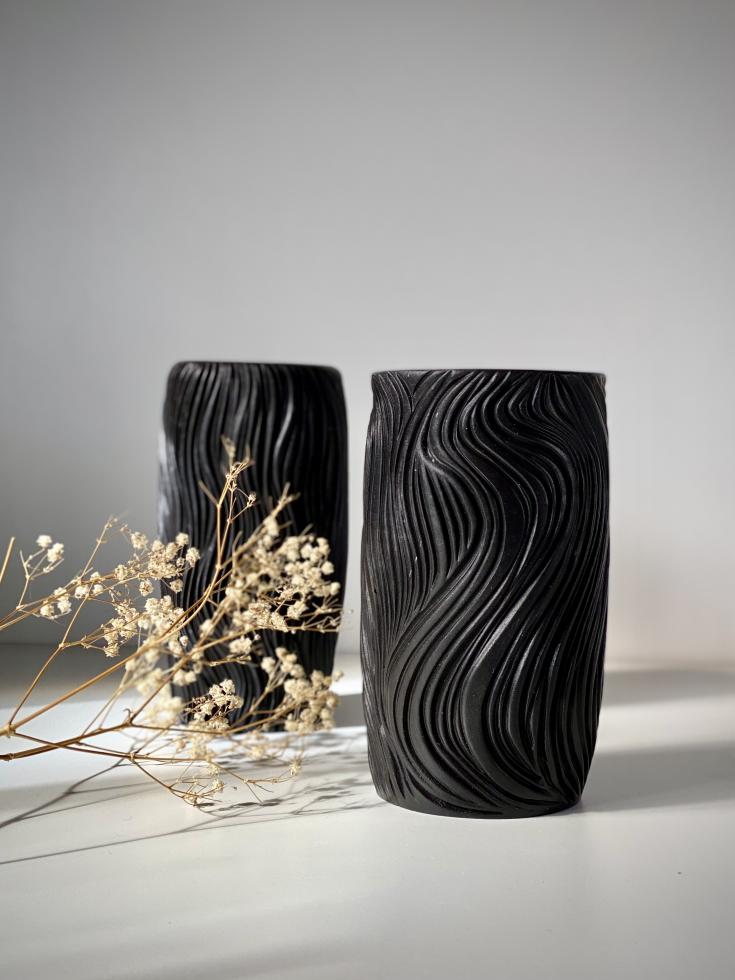
Right. It’s one of the few art forms where, regardless of your beliefs, you are praying to the kiln gods. But you have to accept the outcomes. It gets better though. You get used to breaking stuff. You get used to the impermanence of each piece. You get less attached. It only sucks sometimes.
What do you enjoy about it?
Before I started working with clay I used to dabble in different art forms, like painting, but nothing ever clicked. I feel connected to this. I love taking a ball of wet earth and turning it into a piece that you can hold, touch, sip from or eat off of. It can be functional. I love that you can touch the art. Though you can also make things that are untouchable.
There is so much to learn. I will never get to a point where I will know it all. There is so much history from so many different cultures. There is so much chemistry, especially in the glazes. It’s complicated, it’s cool. I will never stop learning and I absolutely love that part.
I’ve been dabbling more with teaching, and I love how other people are giving me new perspectives. Their interests are different from mine and that’s opening me up to new areas of ceramics.
How do you deal with creative blocks? What does your practice look like?
I think it’s about balancing motivation versus obligation. Not having art be my main source of income means I don’t have to fight with obligation as much. But when I go too long without making something, I get less motivated because it starts feeling like a burden. So sometimes I rest and acknowledge that I don’t feel like doing ceramics.
That’s what I did for pretty much all of December, while I was moving to a new home. Though I did find that I was still making stuff, just not ceramics. I took up some woodworking, I made a mirror, I crocheted the pouf I’m sitting on. My hands just have to move.
Lately I’ve been getting inspired by drawing with markers in a notepad, then putting those drawings up in the studio and seeing how I can incorporate them into clay. That’s different from what I used to do. I’m moving into more illustrative and weird sculpture-esque work.
Something else I have tried at the suggestion of my therapist was to make one thing a day, and I’ve given myself permission to mimic work I like and play with interpretation. It’s pushing me out of my comfort zone. If it fails I don’t care, and if it succeeds I don’t care. I just have to make something different. It shook something up in me. None of it has to go on Instagram and I wouldn’t sell it. But I love trying new things and imitation is often the first step to making your own sauce. I’m learning and finding my own new little level of weirdness. My work hasn’t been very weird. It’s been fun to get weird lately.
Green and pink glaze designs adorn these mugs made by Tasha
Reneé. (Photo by Tasha Reneé)
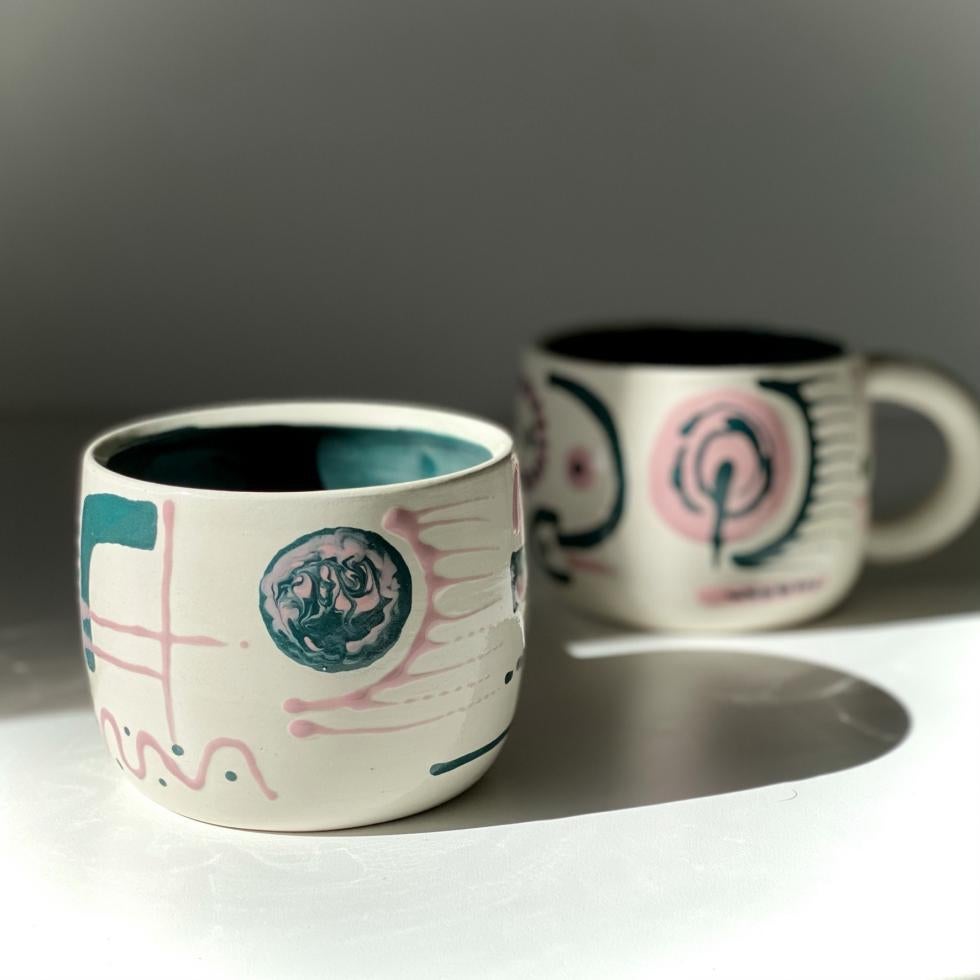
I am proud of how far I’ve come with my skills. When I look back at the original struggle mugs that I was making when I first started versus what I consistently make now, I’m proud of that progression. I’m proud of how bad I sucked and how much less I suck now. Those original struggle mugs I made were tilted and had weak little handles; I couldn’t get anything right. I’d give them to my brother and he would take all these photographs of them with hot cocoa and whipped cream and it would be all askew. I’m proud of the skills that I’ve acquired over time and refined. There’s not really one piece that I’m the most proud of, or a wholesale order that I’m most proud of. It’s really the skills.
How do you feel about Sacramento’s art scene?
It’s a bigger space for visual arts and music. What I make isn’t highbrow art, it’s stuff you use every day. I’ve found lots of support from businesses, but I almost feel like I don’t belong as an artist. I have seen and made connections with potters that I always looked up to, and they happened to live in Sacramento. I’ve made amazing connections with them. Yet most of the stuff we do seems to be online, not necessarily in Sacramento.
What is on the horizon for you?
I’m running my first official workshop with PotLA. It’s an L.A.-based community studio geared toward people of color. They reached out to me to be a guest teacher. I’ll be teaching a resist workshop. (Resist techniques use materials like wax, liquid latex and tape under glaze that help create a pattern when the material is removed.) I have a background in education, but I haven’t taught something quite like this before. I’m nervous, but curious and open. I’m doing prep work to get ready for it. I have also been doing private ongoing lessons for people in the community that I trust and feel comfortable with in my home studio.
I also have a couple of demos coming up with a clay camp for NCECA, a huge pottery conference that happens every year. This year it is in Sacramento in March, and they asked me to do an exhibit. People travel from all over the states and other countries to come to it.
I’ll have some new pottery on my website. I am looking forward to doing more teaching this year, but I’m waiting for spring after NCECA to plan it.
What do you wish I would have asked?
I wish you would have asked, “What is your favorite way of eating a potato?”
What is your favorite way of eating a potato?
That is a hard question.
Edited for length and clarity.
–
Stay up to date on art and culture in the Capital Region: Follow @comstocksmag on Instagram!
Recommended For You
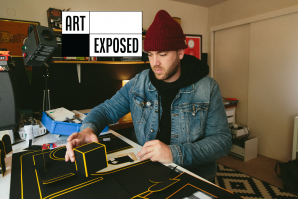
Art Exposed: Jonathan Joiner
How a filmmaker and creative director mines the past for inspiration to create fantastical objects, stop-motion video and playful GIFs
Jonathan Joiner finds inspiration in retro-futuristic gadgets,
movies and “practical things.”
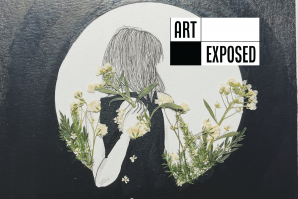
Art Exposed: Sarah Marie Hawkins
Multimedia artist Sarah Marie Hawkins uses a variety of methods
to tell not just her story, but the stories of many women.
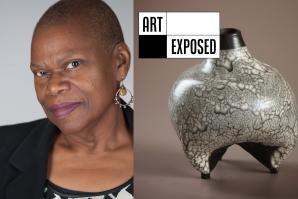
Art Exposed: Deborah Pittman
A professional clarinetist broadens her creative output with
ceramics, writing, filmmaking, multimedia performances — and
puppets.
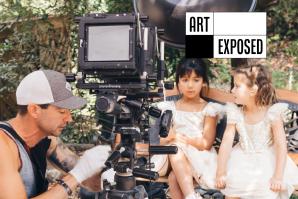
Art Exposed: Dan Herrera
Photographer and college professor Dan Herrera appreciates
the art of using older or alternative methods in his work; some
of his techniques date back 200 years or more.



